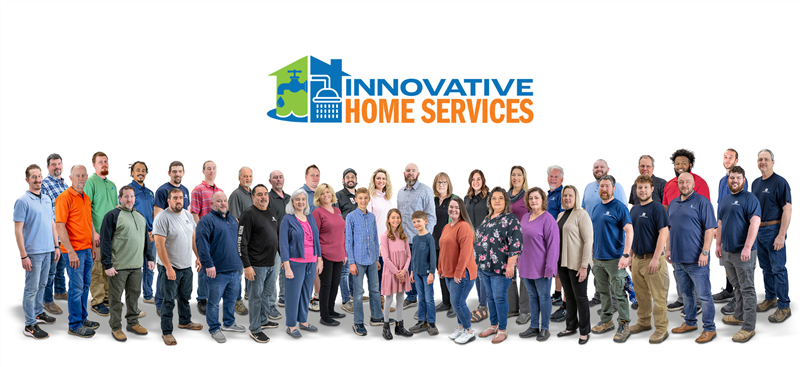
If you’re like 90% of seniors, you would rather live in your own home as you age than move into an assisted living facility or nursing home. This choice—called "aging in place"—sounds appealing. But it requires more than just deciding you want to spend your golden years in your own home. Only 1 in 10 homes is aging-ready. So, you’ll likely need to make upgrades for your home to meet your future needs. And that takes planning and preparation.
The Best Time to Prepare for Aging in Place
The best time to prepare for aging in place is when you’re nearing retirement. Of course, the earlier you start planning, the more control you’ll have over your environment, your independence, and your overall quality of life.
Without proper planning now, you may face rushed decisions and unexpected expenses later.
Planning early gives you time to imagine your ideal living situation, create a budget, and make any necessary home modifications. You’ll be more likely to continue living independently in your own home—whether that’s the one you live in now, or one you move to—without compromising your quality of life.
Considering Where to Age in Place
Will you stay in your current home, or will you move?
Deciding where you want to live during retirement, now, will help you budget and save properly, so you can live where you want as you get older.
If you’re living in the house where you raised your kids, and you’re on a first-name basis with your neighbors, then you may prefer to age in your current home. That’s great—staying in a familiar environment has a lot of benefits as you age.
However, if your children and grandchildren live far away, you might want to move closer to them. You might even decide you want to relocate with your family as their jobs shift and they change addresses.
If you stay in your current home, you’ll want to consider its layout. Do you live in a two-story house where the master bedroom and bathroom are upstairs? Or in a house with stairs at every entryway? In these instances, you might need to add stair lifts or ramps, so your house can support you as your mobility needs change.
If you decide to chase your grandchildren as they change addresses, you’ll want to consider buying a single story home or one with bedrooms and baths downstairs. Even with these types of homes, you're still likely to need to make adjustments. This means you may have to invest in accessibility changes multiple times. So, you have to plan for that extra expense and effort.
The Most Beneficial Age-In-Place Renovations
You may not need to widen doorways, add extra grab bars or replace your tub with a walk-in shower right now, but these features could be vital to keeping you in your own home down the line. Here are some of the most beneficial age-in-place renovations:
Basic Upgrades
- Portable shower benches: to aid in bathing
- Rocker-style or touch light switches: to support those with weakened hands
- Lever-style door handles: to aid those with lessened hand strength or arthritis
- Additional or brighter lights: to lessen the chance of trips and falls
- Grab bars: to stay steady in the shower or bath
Advanced Upgrades
- Adding first floor bed and bath: aids independence when mobility declines
- Handrails: for added balance in halls and on stairs
- Walk-in or roll-in showers: to aid in bathroom accessibility
- Chair-height toilets: to aid in getting up and down unassisted
- Widened Doorways: for wheelchair or walker access
- Level flooring and transitions: to lessen tripping hazards
Estimating the Costs of Age-in-Place Modifications
The cost of aging-in-place modifications can vary widely, depending on the scope of the project. Smaller renovations can cost a few hundred dollars. Larger renovations can be upwards of $100,000.
You might want to tackle smaller projects one at a time. This helps you better manage your cash flow and avoid the financial burden of completing everything at once. However, if you have savings set aside, bundling renovations can save you money in the long run.
For example, when done as a single project, widening doorways to accommodate a wheelchair or walker might cost anywhere from $1,500 to $2,000 per door. Because once a doorway is widened, there will be areas of flooring missing beneath it. And there are extra costs associated with adding the missing flooring.
If you’re already planning to replace flooring throughout the house, you can save money by widening doorways at the same time. In this case, widening the doorways would only cost $500 to $700 per door. When you’re already doing work, adding related modifications will be much more cost-effective than tackling them separately later.
While the cost of modifying your home may seem high, it’s important to compare this with the alternative—moving to a nursing home or assisted living facility.
Home Upgrades vs. Nursing Home Expenses
Research suggests that aging in place is a more cost-effective option than institutional care. Nursing homes can range from $6,000 to $12,000 per month, depending on the quality of care and location. Even on the lower end of the spectrum, the long-term expenses of nursing homes add up quickly. And, for many, lower-cost nursing homes may not provide the level of care or comfort they desire.
By contrast, investing in modifications to your home could pay off in just a few months when compared to the cost of assisted living. For example, installing a walk-in shower or adding grab bars might cost a few thousand dollars upfront, but these changes allow you to maintain your independence and avoid the steep monthly fees of a care facility.
When you look at the bigger picture, making the necessary changes to your home is a smart long-term investment.
Getting a Professional Assessment of Your Home's Needs
Deciding which age-in-place renovations to make doesn’t have to be overwhelming. If you’re not sure where to start with home modifications, consider getting a professional assessment.
Many contractors offer free or low-cost assessments to help you determine what changes are necessary to make your home safe and accessible as you age. A contractor will walk through your home, pointing out areas that may need attention, such as narrow doorways, high thresholds, or inaccessible bathrooms.
This gives you a clear idea of where to start and how much the modifications will cost. It also helps you prioritize the most critical upgrades.
Innovative Restorations Offers Free Consultations in Middle Tennessee
At Innovative Restorations, we offer free consultations to help you understand what changes your home needs as you age. Whether you’re thinking about widening doorways, installing grab bars, or making larger structural modifications, we’ll guide you through the process and create a plan that works for your budget and lifestyle. Don’t wait until it’s too late. Take the first step toward a secure, comfortable future in a home that you love. Call us today or fill out the form at the top of this page for a free consultation!
Subscribe to Innovative Home Services's Blog








Comments